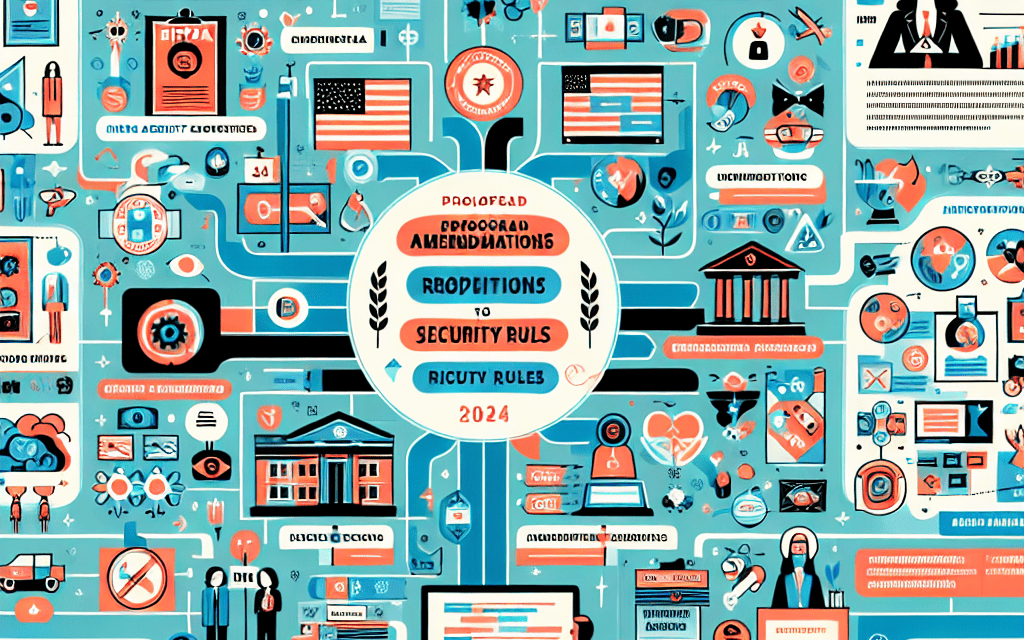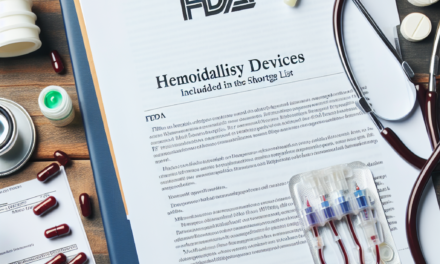Understanding the Proposed Amendments to HIPAA Security Rules in 2024
The Health Insurance Portability and Accountability Act (HIPAA) has been a cornerstone of healthcare privacy and security since its enactment in 1996. As technology evolves and the healthcare landscape changes, so too must the regulations that govern the protection of sensitive patient information. In 2024, proposed amendments to the HIPAA Security Rules are set to reshape how healthcare organizations manage and safeguard electronic protected health information (ePHI). This article delves into the proposed amendments, their implications, and the broader context of healthcare security.
1. Overview of HIPAA and Its Security Rules
HIPAA was designed to improve the efficiency of the healthcare system while ensuring the privacy and security of patient information. The Security Rule, established in 2003, specifically addresses the protection of ePHI, which is any health information that is created, stored, transmitted, or received electronically. The Security Rule outlines three main categories of safeguards that healthcare organizations must implement:
- Administrative Safeguards: Policies and procedures designed to manage the selection, development, implementation, and maintenance of security measures.
- Physical Safeguards: Measures to protect electronic systems and related buildings from natural and environmental hazards.
- Technical Safeguards: The technology and policies that protect ePHI and control access to it.
Despite its comprehensive framework, the rapid advancement of technology and the increasing sophistication of cyber threats have prompted calls for updates to the Security Rule. The proposed amendments aim to address these challenges and enhance the overall security posture of healthcare organizations.
2. Key Proposed Amendments to the HIPAA Security Rules
The proposed amendments to the HIPAA Security Rules in 2024 focus on several critical areas, including risk assessment, encryption requirements, and incident response protocols. Each of these areas is designed to strengthen the security of ePHI and ensure that healthcare organizations are better equipped to handle potential breaches.
2.1 Enhanced Risk Assessment Requirements
One of the most significant proposed changes is the enhancement of risk assessment requirements. Currently, HIPAA mandates that covered entities conduct regular risk assessments to identify vulnerabilities in their systems. However, the proposed amendments would require more frequent assessments and a more comprehensive approach to identifying risks.
Healthcare organizations would need to:
- Conduct risk assessments at least annually, rather than every three years.
- Incorporate a broader range of potential threats, including insider threats and third-party risks.
- Document the risk assessment process in detail, including the methodologies used and the findings.
This change aims to ensure that organizations are not only aware of their vulnerabilities but are also actively working to mitigate them. By requiring more frequent assessments, the amendments seek to create a culture of continuous improvement in security practices.
2.2 Mandatory Encryption of ePHI
Another critical amendment is the proposed requirement for mandatory encryption of ePHI. While HIPAA currently encourages encryption as a best practice, it does not mandate it. The proposed changes would require healthcare organizations to encrypt all ePHI, both at rest and in transit.
The rationale behind this amendment is clear: encryption serves as a robust defense against unauthorized access. In the event of a data breach, encrypted data is significantly less likely to be compromised. For example, the 2020 ransomware attack on Universal Health Services (UHS) highlighted the vulnerabilities of unencrypted data. UHS faced significant operational disruptions and financial losses due to the breach, which could have been mitigated with stronger encryption practices.
Healthcare organizations would need to:
- Implement encryption protocols for all devices and systems that store or transmit ePHI.
- Regularly update encryption technologies to keep pace with evolving threats.
- Train staff on the importance of encryption and secure handling of ePHI.
2.3 Strengthened Incident Response Protocols
The proposed amendments also emphasize the need for strengthened incident response protocols. In an era where cyberattacks are increasingly common, having a robust incident response plan is essential for minimizing damage and ensuring a swift recovery.
Under the proposed changes, healthcare organizations would be required to:
- Develop and implement a comprehensive incident response plan that outlines roles, responsibilities, and procedures for responding to security incidents.
- Conduct regular training and simulations to ensure staff are prepared to respond effectively to incidents.
- Establish clear communication protocols for notifying affected individuals and regulatory bodies in the event of a breach.
These measures aim to ensure that healthcare organizations can respond quickly and effectively to security incidents, thereby minimizing the impact on patients and the organization itself.
3. Implications for Healthcare Organizations
The proposed amendments to the HIPAA Security Rules will have far-reaching implications for healthcare organizations of all sizes. Compliance with the new requirements will necessitate significant changes in policies, procedures, and technologies. Here, we explore some of the key implications for organizations.
3.1 Increased Compliance Costs
One of the most immediate implications of the proposed amendments is the potential for increased compliance costs. Healthcare organizations will need to invest in new technologies, conduct more frequent risk assessments, and enhance their incident response capabilities. This could lead to significant financial burdens, particularly for smaller organizations with limited resources.
Organizations may need to:
- Allocate budget for new encryption technologies and training programs.
- Hire additional staff or consultants to assist with compliance efforts.
- Invest in ongoing education and training for existing staff to ensure they are aware of new requirements.
While these costs may be substantial, they are necessary investments in the security and privacy of patient information. Failure to comply with the new regulations could result in even greater financial penalties in the event of a breach.
3.2 Changes in Operational Practices
The proposed amendments will also necessitate changes in operational practices within healthcare organizations. Organizations will need to adopt a more proactive approach to security, moving from a reactive stance to one that emphasizes prevention and preparedness.
This shift may involve:
- Implementing regular training sessions for staff on security best practices and incident response.
- Establishing a dedicated security team responsible for overseeing compliance efforts and monitoring for potential threats.
- Creating a culture of security awareness throughout the organization, where all employees understand their role in protecting ePHI.
By fostering a culture of security, organizations can better protect themselves against potential breaches and ensure compliance with the new regulations.
3.3 Enhanced Patient Trust and Engagement
While the proposed amendments may present challenges, they also offer an opportunity for healthcare organizations to enhance patient trust and engagement. By demonstrating a commitment to protecting patient information, organizations can build stronger relationships with their patients.
Organizations can enhance patient trust by:
- Communicating openly about their security practices and the steps they are taking to protect ePHI.
- Providing patients with resources and information on how they can protect their own health information.
- Encouraging feedback from patients on their experiences with security and privacy practices.
By prioritizing security and transparency, healthcare organizations can foster a sense of trust and confidence among their patients, ultimately leading to improved patient engagement and satisfaction.
4. Case Studies: Lessons from Recent Breaches
To understand the importance of the proposed amendments to the HIPAA Security Rules, it is essential to examine recent case studies of healthcare data breaches. These incidents highlight the vulnerabilities that exist within the healthcare sector and underscore the need for stronger security measures.
4.1 The Universal Health Services Ransomware Attack
In September 2020, Universal Health Services (UHS), one of the largest healthcare providers in the United States, fell victim to a ransomware attack that disrupted operations across its facilities. The attack forced UHS to shut down its electronic health record (EHR) systems, leading to significant delays in patient care and operational disruptions.
The attack exposed vulnerabilities in UHS’s security practices, particularly regarding the protection of ePHI. Following the incident, UHS faced scrutiny over its cybersecurity measures and compliance with HIPAA regulations. The attack serves as a stark reminder of the potential consequences of inadequate security practices and the importance of implementing robust incident response protocols.
4.2 The Anthem Data Breach
In 2015, Anthem Inc., one of the largest health insurers in the United States, experienced a massive data breach that exposed the personal information of nearly 80 million individuals. The breach was attributed to a sophisticated cyberattack that exploited vulnerabilities in Anthem’s security systems.
The fallout from the breach was significant, resulting in a $16 million settlement with the Department of Health and Human Services (HHS) and a commitment to enhance its security practices. The Anthem breach underscores the importance of conducting regular risk assessments and implementing strong encryption measures to protect sensitive data.
4.3 The Premera Blue Cross Breach
In 2014, Premera Blue Cross suffered a data breach that compromised the personal information of approximately 11 million individuals. The breach was attributed to a cyberattack that exploited vulnerabilities in Premera’s security systems, leading to unauthorized access to ePHI.
Following the breach, Premera faced significant legal and financial repercussions, including a $10 million settlement with HHS. The incident highlighted the need for healthcare organizations to prioritize cybersecurity and implement comprehensive incident response plans to mitigate the impact of potential breaches.
5. Preparing for Compliance: Best Practices for Healthcare Organizations
As healthcare organizations prepare for the proposed amendments to the HIPAA Security Rules, it is essential to adopt best practices that will facilitate compliance and enhance overall security. Here are some key strategies organizations can implement:
5.1 Conduct Regular Risk Assessments
Healthcare organizations should prioritize regular risk assessments to identify vulnerabilities and assess their security posture. This includes:
- Conducting assessments at least annually, as proposed in the amendments.
- Involving cross-functional teams to ensure a comprehensive evaluation of risks.
- Documenting findings and developing action plans to address identified vulnerabilities.
5.2 Implement Strong Encryption Practices
Organizations should adopt strong encryption practices to protect ePHI. This includes:
- Implementing encryption protocols for all devices and systems that store or transmit ePHI.
- Regularly updating encryption technologies to keep pace with evolving threats.
- Training staff on the importance of encryption and secure handling of ePHI.
5.3 Develop Comprehensive Incident Response Plans
Healthcare organizations should develop and implement comprehensive incident response plans that outline procedures for responding to security incidents. This includes:
- Establishing clear roles and responsibilities for incident response teams.
- Conducting regular training and simulations to ensure staff are prepared to respond effectively.
- Establishing communication protocols for notifying affected individuals and regulatory bodies in the event of a breach.
5.4 Foster a Culture of Security Awareness
Organizations should foster a culture of security awareness throughout the organization. This includes:
- Providing ongoing training and education for staff on security best practices.
- Encouraging employees to report potential security incidents or vulnerabilities.
- Recognizing and rewarding employees who demonstrate a commitment to security.
5.5 Stay Informed About Regulatory Changes
Healthcare organizations should stay informed about regulatory changes and updates to HIPAA regulations. This includes:
- Monitoring updates from HHS and other regulatory bodies regarding HIPAA compliance.
- Participating in industry forums and discussions to stay abreast of best practices and emerging threats.
- Engaging legal and compliance experts to ensure ongoing adherence to regulations.
Conclusion
The proposed amendments to the HIPAA Security Rules in 2024 represent a significant step forward in enhancing the security of electronic protected health information. By addressing key areas such as risk assessment, encryption, and incident response, these amendments aim to strengthen the overall security posture of healthcare organizations.
While compliance with the new regulations may present challenges, it also offers an opportunity for organizations to enhance patient trust and engagement. By prioritizing security and transparency, healthcare organizations can build stronger relationships with their patients and ultimately improve the quality of care they provide.
As the healthcare landscape continues to evolve, it is essential for organizations to stay informed about regulatory changes and adopt best practices that will facilitate compliance and enhance overall security. By doing so, they can better protect sensitive patient information and ensure a safer healthcare environment for all.




